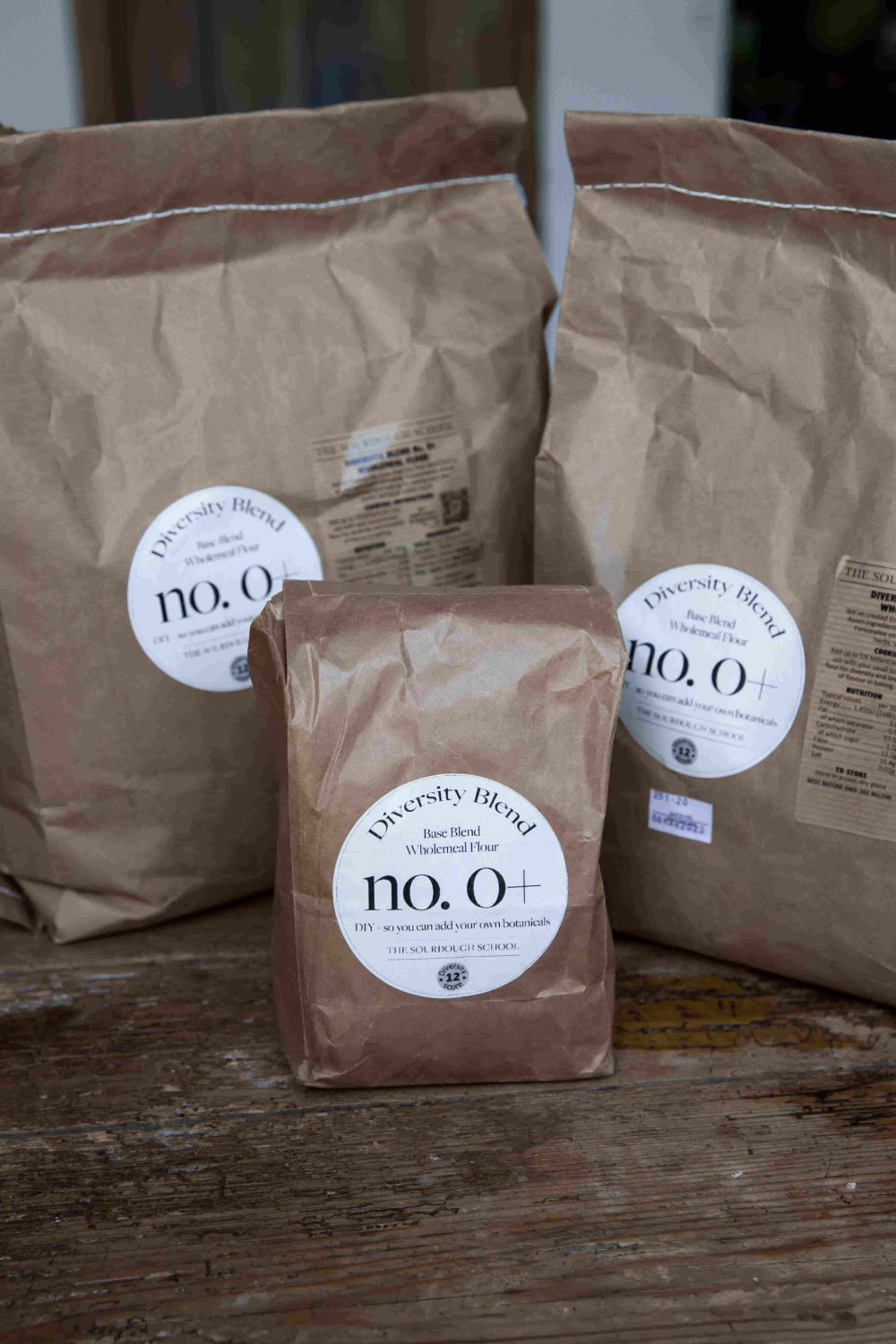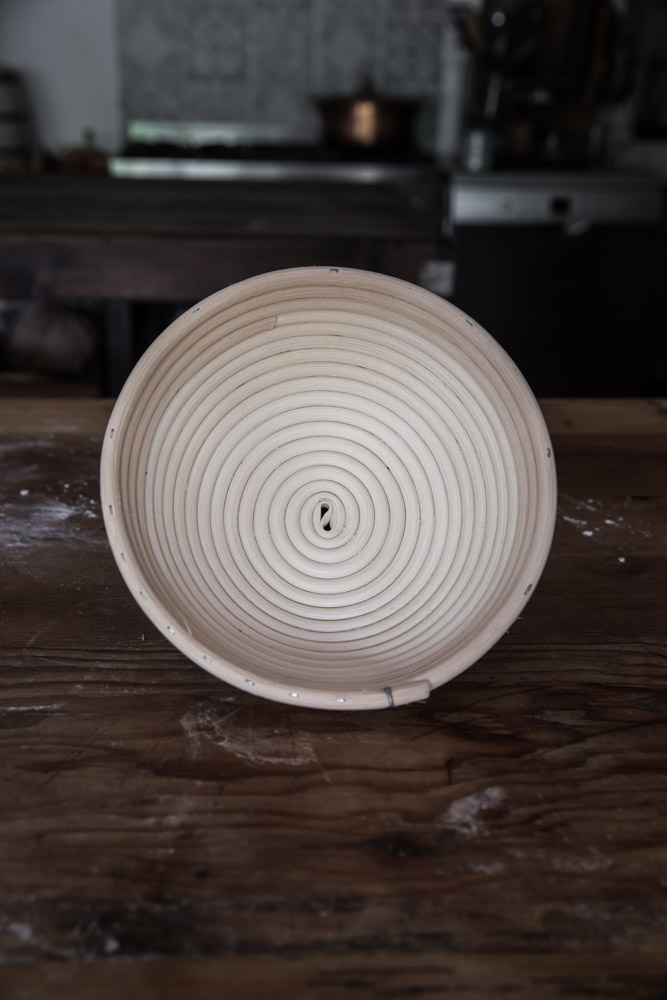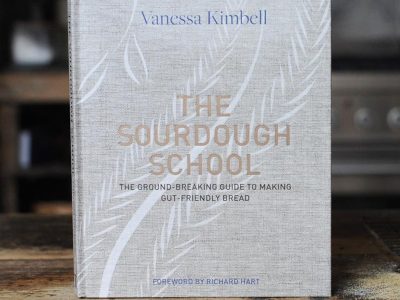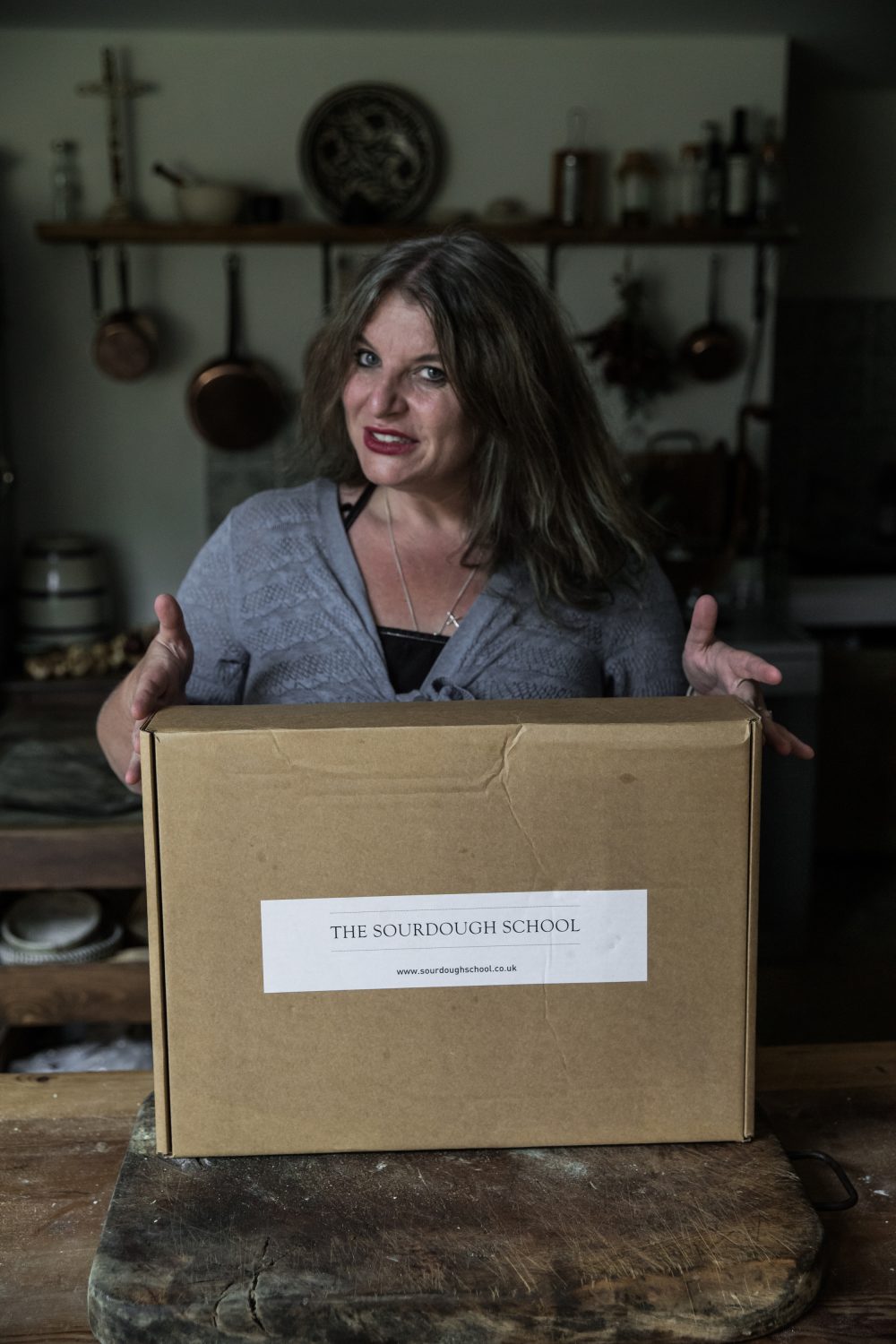A tool for defining if bread is healthy or not
I have for many years been explaining how you can tell if a bread is “healthy,” or not. With so many marketing claims about it is difficult to determine of a bread is good for you or not. There are claims about gut health, and goodness, and life changing breads. This bread evaluation tool is an academic, mathematical framework based on two models of evaluating healthfulness that will make it clear in simple terms if a bread is healthy or not and what what level by a score that allows people to determine if their bread is healthy. It’s quick, easy and it works.

One of the things I have noticed over the years is that there is no agreement on what makes a bread healthy or not, and there is a huge amount of misinformation on bread. So, I decided to create a way of quickly evaluating bread, and I hope that this will help discern if bread really is good for you. There is so much marketing hype, with clever wording and packaging, and I am often asked my opinion. So, I have shared the way in which we evaluate bread here at The Sourdough School, and below is a detailed explanation of how we do this and why we have our own way to determine what is a healthy bread or not. You don’t need to read this; you can simply skip to the evaluation tool here. But if you want to see how the scoring works and understand more about the weighing of the score and where the knowledge has come from to create this, please read more information below
The Limitations of the NOVA System in Bread Classification & how bread can be classified as healthy as part of the wider food system.
A tool to help cut through misinformation for global health on bread
In the first instance the most acceptable levels of food classification is the NOVA food classification system is a key tool for categorising foods by their processing levels, providing a broad overview of the food system. Yet, when applied to bread, its broad categories often miss the mark, failing to capture bread’s nutritional and cultural complexities.
NOVA sorts foods into four groups, ranging from unprocessed to ultra-processed. This framework is useful for general health assessment but falls short with bread. It overlooks the subtle differences in bread-making methods, flour types, and ingredient choices that critically influence a loaf’s health benefits. For instance, the stark nutritional differences between a whole grain, stone-ground sourdough and a chemically leavened white bread are not adequately differentiated within NOVA’s broad brushstrokes, the length and the of fermentation is not taken into account, ignoring the transformational properties of fermentation. The NOVA system, while instrumental in distinguishing foods based on processing levels, oversimplifies the complex landscape of bread. Its broad categories, ranging from unprocessed to ultra-processed, it fails to capture the subtleties that define the healthfulness of bread, such as the effects of different milling processes, the impact of fermentation on digestibility, or the nutritional enhancements of various ingredients. In contrast, the BALM Protocol, grounded in the principles of Baking as Lifestyle Medicine, provides the depth needed to evaluate these nuances, emphasising the importance of ingredient quality, traditional preparation methods, and the nutritional integrity of bread
An unfair representation of bread as ultra processed for bread baked by artisan bakers & a gap for commercial producers to exploit
This gap means that there is a limitation in our ability categories bread, and although I have welcome this amazing approach of NOVA and the empowerment to define what is ultra processed its lack of detail on how methods like long fermentation affect digestibility and nutrient access, or the significance of flour choice on health means that unhealthy bread are in with the healthy bread category. The NOVA system also glosses over artisanal breads that, despite some processed ingredients, offering more nutritional value than heavily processed variants.
Bridging the short coming of Nova Food Classification for Bread
Despite the Nova system being a brilliant tool for many years, finding a solution to defining the healthfulness of bread has elusive without a foundational framework to classify and assess its nutritional value. It was only through the integration of an established system, with the nuanced insights of the BALM Protocol, that a comprehensive and globally applicable framework emerged. This combination has been a game changer, allowing for the detailed categorisation of bread within a broader food system context while addressing the specificity required for bread assessment.
.
Levelling the playing field – A Global Scoring System for Bread Healthfulness
Combining the BALM Protocol with NOVA has led to the creation of a powerful scoring system that enables anyone, anywhere in the world, to quickly and accurately determine the healthfulness of bread. This system not only aligns with the NOVA framework by categorising bread into more fitting groups but also incorporates the detailed considerations of the BALM Protocol, making it a truly innovative tool for global health.
Cutting Through Misinformation for Global Health
By establishing a clear, evidence-based standard to categorise bread, we can cut through the misinformation and marketing spiel that often obscures the truth about our food. This clarity empowers consumers, healthcare professionals, and bakers alike to make informed decisions about bread, ultimately leading to better health outcomes. The significance of this development cannot be overstated; it represents a pivotal step forward in our collective understanding of bread and its impact on our health, setting a new global standard for nutritional integrity in one of the world’s oldest and most cherished foods.
A Comprehensive Scoring System to evaluate if your bread is healthy
How the Bread Categorisation Score Works – Starting with 100 points, you deduct points to get your bread score:
This Bread Scoring uses the 6 key health determinants of bread starting with a base score of 100 points and deduct points based on the following criteria to determine bread’s final score read the able on your Bread OR talk to your baker- this is an overview of how the scoring works.
1) Whole Grain Content
- Made with a diversity of more than 5 grains, seeds, or botanical blend flour: This diversity is crucial for providing a wide range of nutrients, fibres, and minerals, supporting gut health and nutritional balance.
- 100% whole grain flour:
- While beneficial, lack of diversity slightly limits the bread’s nutritional profile.
- Yes my flour is diverse with more than 5 different ingredints = 0 points deducted.
- No my flour is just made with one ingredient = 10 points deducted.
- At least 50% whole grain flour: Wholegrain is a major step towards healthfulness, but further improvement in diversity is needed to maximise health benefits.
- Less than 50% whole grain and no diversity, significantly impacts the bread’s nutritional value negatively.
- 6% or less fibre per 100g = 0 points deducted.
- 5% for less fibre per 100g = 10 points deducted.
- 3% or less fibre per 100g = 15 points deducted.
- 2% or less fibre= 20 points deducted.
2) The Milling Process
- Stone-ground flour is preferential having the matrix still in tact and for its ability to retain more nutrients and ensure a less disruptive impact on the grain’s natural state.
- Not stone-ground indicates a potential reduction in the flour’s nutritional quality. (Please note that if it does not specify stoneground assume roller milled.)
- Your Bread is made with Stoneground flour = 0 points deducted.
- Your bread is made with roller milled flour = 10 points deducted.
3) The Flour Agrochemical Exposure
Flour not treated with agrochemicals: Essential for avoiding unnecessary chemical exposure, supporting sustainable farming practices, and promoting soil health.Flour treated with agrochemicals– raises concerns about the residual impact of these chemicals on health and the environment.
- Organic = 0 points deducted.
- Regeneratively Farmed = ) 0 points deducted
- N0 mention of organic or regeneratively farmed = 10 points deducted.
4) Industrial Additives in your Bread
The Presence of additives, preservatives, or artificial components: Additives detracts from the bread’s natural quality and some can impact health negatively but they are an indicator of processing ( look out for , lecithin, mono- and diglycerides, DATEM (diacetyl tartaric acid esters of monoglycerides), SSL (sodium stearoyl lactylate), PGME (propylene glycol monostearate), calcium stearoyl-2-lactylate, calcium propionate, sodium benzoate, potassium sorbate, diacetyl, ethyl maltol, vanillin, azodicarbonamide (ADA), L-cysteine, calcium peroxide, high fructose corn syrup, maltodextrin, sucrose, caramel colour, annatto, ascorbic acid (vitamin C), calcium carbonate, glycerin)
No additives = 0 points deducted.
Additive = 20 points deducted.
5) The Fermentation Process
Naturally leavened (e.g., sourdough) or uses a long fermentation process, promotes better digestibility and nutrient availability.
- Retarded fermentation: Allows for deeper flavour development and cold longer fermentation can significantly improve nutrient bioavailability = 0 points deduced
- Ambient fermentation: Enhances flavour complexity and nutritional aspects without artificial acceleration. = 5 points deducted.
- Unspecified fermentation (fast-action yeast). This Lacks the benefits of extended natural fermentation processes, affecting the bread’s health potential= 20 points deducted.
- Addition of vinegar an industrial trick to replace fermentation with some damage to gluten but less transformational impact = 10 points deducted
6) Natural Nutritional Enhancements
Includes seeds, nuts, or legumes, dried fruit for example adds valuable nutrients, fibres, and textures, contributing to the bread’s overall nutritional profile. Does not include these enhancements our bread has missed the opportunity to enhance the bread’s healthfulness and nutritional value.
- Yes my bread includes extra ingredients = 0 points deducted.
- no my bread does to have any inclusions = 20 points deducted
Interpreting the Bread Categorisation Score
81-100 Points: Group 1 – Unprocessed or Minimally Processed Breads. Your bread is healthy and nourishing.
- Characteristics: Made with whole, diverse grains and flours, potentially stone-ground. These breads are naturally leavened, such as sourdough, or use minimal yeast and have a long fermentation process. They contain no additives, preservatives, or artificial ingredients.
- Examples: Multigrain sourdough bread made with a variety of whole grains (e.g., rye, spelt, wheat) and seeds, whole grain sourdough bread with added botanicals and legumes.
61-80 points: Group 2 – Artisan Breads and Artisan-style Commercial Breads (Yeasted or Sourdough) that either have more refined flour or lack fermentation.
- Characteristics: Artisan and artisan-style loaves that may use some refined flours but still avoid additives and preservatives. They may incorporate processed ingredients like plant oils, sugars, or non-whole grains but are made with care and attention to nutritional quality. The milling process may be less traditional, such as roller-milled flours, but effort is made to preserve nutritional content.
- Examples: Artisan white sourdough bread, whole grain yeasted bread with added seeds and nuts.
41-60 points: Group 3 – Processed Breads at the Higher End of Processing.
- Characteristics: These breads include more processed ingredients and may have additives to extend shelf life or modify texture and taste. They might still avoid the most harmful additives but are a step away from traditional bread-making processes. They could be partially whole grain or enriched flours with added vitamins and minerals.
- Examples: Commercial whole wheat bread with added preservatives, multigrain bread with added sugars and fats.
0-40 points: Group 4 – Ultra-Processed Breads. Your bread is ultra-processed, heavily reliant on refined ingredients and industrial processing techniques that lower its nutritional value.
- Characteristics: These breads are highly processed and contain a long list of additives, preservatives, artificial flavors, and colors. They are made from heavily refined flours and ingredients designed to enhance flavor, texture, and shelf life at the cost of nutritional integrity. They are the furthest from traditional bread-making practices.
- Examples: Mass-produced white bread, sweetened bakery items, packaged bread with high-fructose corn syrup and artificial additives.
The Dr. Kimbell Bread Categorisation Score offers a comprehensive and user-friendly tool for assessing the healthfulness of bread based on its processing levels and ingredients. By providing a clear scoring system and detailed interpretations, this tool empowers consumers, healthcare professionals, and bakers to make informed decisions about the bread they consume or produce, ultimately promoting healthier choices in line with the BALM protocol’s guidelines.
Scoring Interpretation
81-100 Points: – Group 1: Unprocessed or Minimally Processed Breads. Your bread is healthy and nourishing.
Your bread is not ultra-processed, embodying the highest standards of nutritional integrity and traditional preparation. – Characteristics: Made with whole, diverse grains and flours, potentially stone-ground. These breads are naturally leavened, such as sourdough, or use minimal yeast and have a long fermentation process. They contain no additives, preservatives, or artificial ingredients.Examples: a high level of diversity and fibre from wholegrain made with multigrain, such as, rye, spelt, and other whole grain breads made with natural ingredients and traditional methods and may also include botanicals and legumes, and lots of nourishing ingredients to nourish your gut.
61-80 points: Group 2 Artisan Breads, and Artisan style bread commercial breads yeasted or Sourdough that contain either have more refined flour or lack fermentation
- Characteristics: Artisan and artisan style loaves that may use some refined flours but still avoid additives and preservatives. They may incorporate processed ingredients like plant oils, sugars, or non-whole grains but are made with care and attention to nutritional quality. The milling process may be less traditional, such as roller-milled flours, but effort is made to preserve nutritional content.
- Examples: Artisan white breads, baguettes, or loaves made with a blend of whole and refined grains, often with added ingredients like seeds, nuts, or olives.
41-60 points: Group 3 Processed Breads at the Higher End of Processing
- 41-60 points: Your bread is moderately processed, indicating some reliance on processed ingredients affecting its nutritional benefits.
- Characteristics: These breads include more processed ingredients and may have additives to extend shelf life or modify texture and taste. They might still avoid the most harmful additives but are a step away from traditional bread-making processes. They could be partially whole grain or enriched flours with added vitamins and minerals.
- Examples: Commercial whole wheat or multigrain breads that include additives like emulsifiers, improved shelf-stable varieties, and breads with added sugars or fats.
0-40 points: Group 4: Ultra-Processed Breads
Your bread is ultra-processed, heavily reliant on refined ingredients and industrial processing techniques that lower its nutritional value.
- Characteristics: These breads are highly processed and contain a long list of additives, preservatives, artificial flavours, and colors. They are made from heavily refined flours and ingredients designed to enhance flavor, texture, and shelf life at the cost of nutritional integrity. They are the furthest from traditional bread-making practices.
- Examples: Mass-produced white bread, sweetened bakery items, packaged bread with high-fructose corn syrup, dough conditioners, and other artificial additives.




 Is your bread healthy? Try The Bread Health Calculator
Is your bread healthy? Try The Bread Health Calculator
Thank you for this! The verdict is out: my bread is healthy! 😉 The only “processed” ingredient is beer – but even that is only processed by us since we make homebrew! All freshly mockmilled flour (rye, hard red winter, hard red spring, hard white winter, triticale & spelt), Sourdough Levain made with freshly milled rye and sprouted rye berries for extra chewiness) and usually sunflower & pumpkin seeds, or roasted onions & rosemary, or something else “real”. Sometimes I sift my flour and soak the sifted out bran in my kefir overnight and then add it back in. I also add about 50g spent grain from the beer – nothing gets wasted here! haha! that rhymes! Thanks again for the great article!
Sabine your bread sounds amazing & thank you for the rhyme!
Vanessa
I have been making bread using wholemeal stoneground flour (locally grown wheat ground in a restored watermill). I do not think the farm is organic or regenerative, but the flour does not have any additives. I add olive oil to the bread but nothing extra, and use dried yeast but not fast acting. So the score for my bread came into Group 3, which I found surprising as the taste and texture is very good. I just wondered if the categorisation is a bit too broad?
But I will definitely try experimenting with adding other grains and seeds, and enjoyed the podcast on black barley.
Thank you. I am assuming that you used the calculator? If you are using wholegrain, and long slow fermentation this is great news. One of the main findings that has been a gem changer in terms of understanding gut health is the need for fibre and diversity. The acceptance of diversity as the standard to make our bread means that our baseline, or our foundation to our diet is fundamentally wrong.
Next – there is nothing “wrong” with making yeasted bread, however you are missing out on the action of the microbes. It’s not about flavour, but about the action of the microbes on making the nutrients more bioavailable. This is key in my opinion, and the long slow retarded fermentation is one of the things that unlocks significant changed hat allows you to uptake the most nourishment possible from your bread.
The calculator is designed to score bread according to what makes it the healthiest and I would love for you to add some seeds, or spices, or both to your bread and re score. Your gut microbes will be delighted. Let me know how you get on.
Kindest regards
Dr Kimbell
That is very helpful, thank you. Would putting it in table form for quick use be helpful? or even a digital version.
I like it. Thanks.
I wonder if you tried this. – The Bread Health Calculator ?